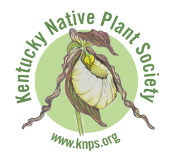Jonathan Omar Cole Kubesch1,2, Lauryn Jansen1, Dillon P. Golding1,3,4, Makayla Bryant1, Frank Reith1,2, and Derek Hilfiker1,2
- Virginia Tech School of Plant and Environmental Sciences; Blacksburg, VA
- Country Home Farms; Pembroke, VA
- Virginia Tech Urban Horticulture Center; Blacksburg, VA
- Hoot Owl Hollow Farm, Woodlawn, VA
Today, most Upper South pastureland consists of tall fescue (Festuca arundinacea). Tall fescue grasslands suit cattle production needs for much of the year with few inputs and tolerate mismanagement more effectively than many other forage species (Kubesch et al., 2022a). However, tall fescue (TF) is limited in that the warm summer months are suboptimal for the cool-season grass, and the toxic endophyte in most tall fescue can lead to undesirable cattle effects. Cattle might have reduced performance in terms or gain, milk production, or reproduction, as well as elevated heat stress.
Native warm-season grasses (NWSGs) are warm-season grasses suited to producing forage during the heat of summer, when TF is not under optimal conditions for growth, which peaks in spring and fall. Examples of these species include big bluestem (Andropogon gerardii), little bluestem (Schizachyrium scoparium), and Indiangrass (Sorghastrum nutans). Additionally, NWSGs can improve environmental outcomes over TF through wildlife benefits as well as improved drought resilience (Keyser et al., 2019; Keyser, 2021). Our position on the utilization of NWSGs in the Upper South for grazing is that NWSGs can complement existing TF grazing systems where management and infrastructure are available to transition between spatially separated TF and NWSG stands.
Spatially explicit TF and NWSG stands are requisite in order for the use of these respective species to be sustainable over a production lifecycle. Cool-season grasses outcompete warm-season grasses during the spring and fall, and the inverse occurs in the summer (Keyser, 2021). Portions of acreage for the TF and NWSG components of a grazing system have been used rather than a composition basis.
NWSG grass stands have been suggested to make up between 10-30% of Upper South farm acreage in a recent synthesis (Keyser, 2021). Given recent experimental work where heifers had the ability to select tall fescue or NWSG portions of a paddock over most of a grazing season, the 30% of acreage in NWSG seems more reasonable than the 10% value. However, given that converting from one forage to another forage results in 1+ year of lost forage production (Keyser, 2021), a piecemeal transition strategy like that suggested for organic forage production might be more practical (Kubesch et al., 2022b).
30% of farm acreage might be the long-term goal, however, that goal can be accommodated through converting smaller tracts over time. In a series of farm case studies, producers converted approximately 5-10% of their acreage to NWSG stands as trials for potential expansion (Virginia Cooperative Extension [Case studies]). Seeing as these conversions are already at smaller scales than what may be the long-term target, a piecemeal approach seems to be the most logical process. Conversions of select paddocks within grazing management units might also constrain the conversion process. Any forage establishment carries the risk of failure, and as such, establishing NWSGs during the conversion process can create additional risks (Kubesch et al., 2022b). In addition to the stand failing to result in enough viable plants for forage production, establishing stands can risk soil erosion, weed encroachment, nutrient leaching, water quality decline, and minor habitat loss for insects. The preference for perennial sods is in part to mitigate these environmental constraints, maintain forage production with minimal inputs, and to reduce establishment failure risk (Keyser, 2021; Case Studies; Kubesch et al., 2022b).
Continue reading Native warm-season grasses can benefit cattle and wildlife but require good management →










